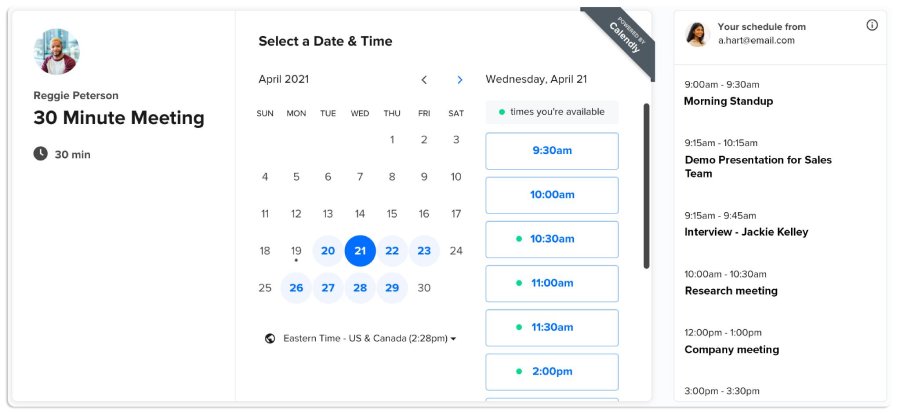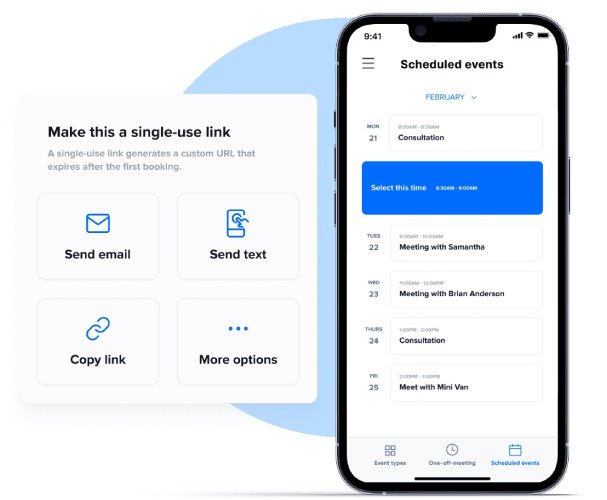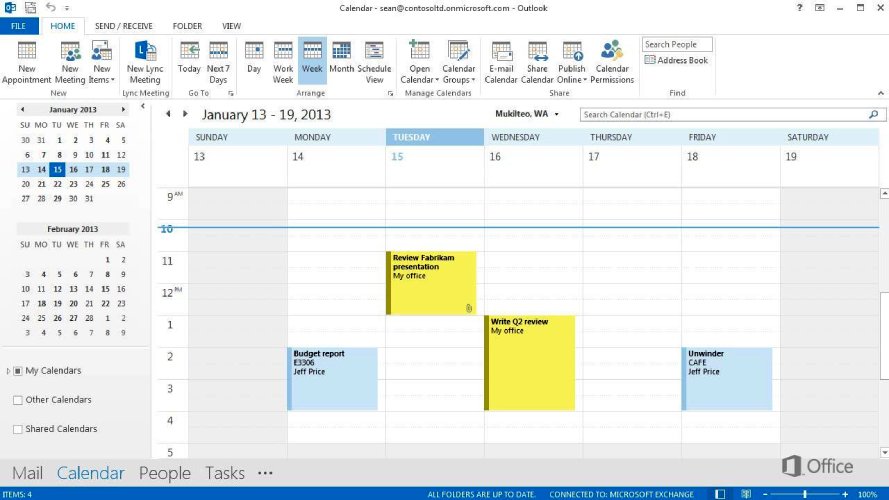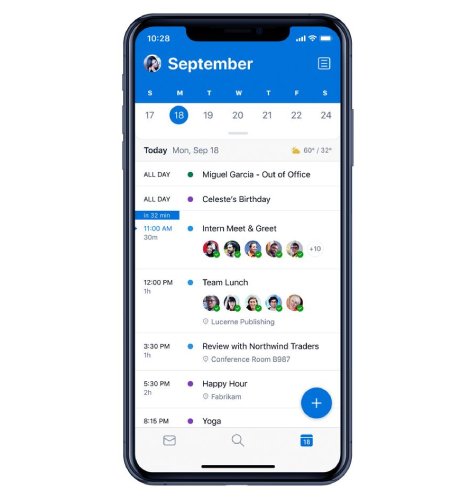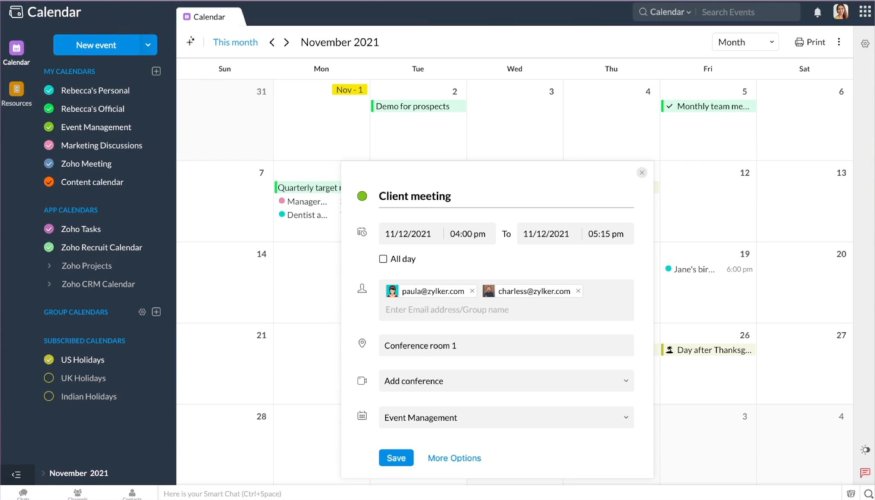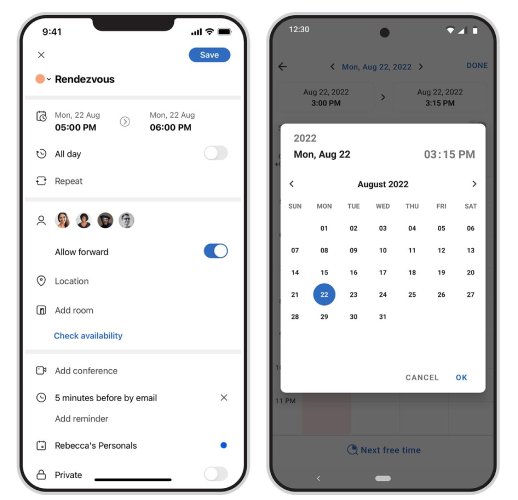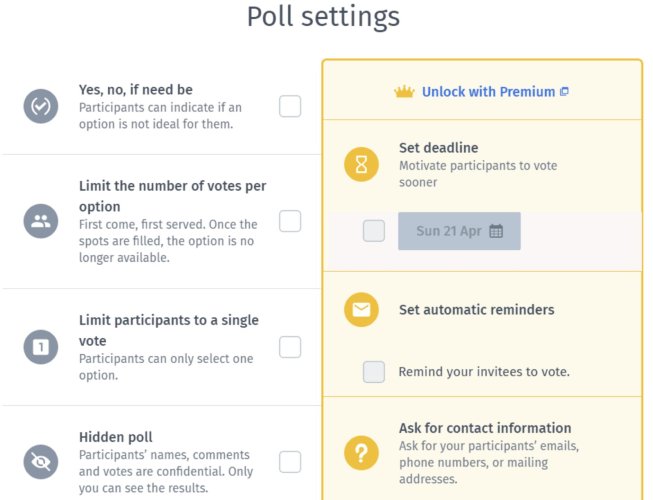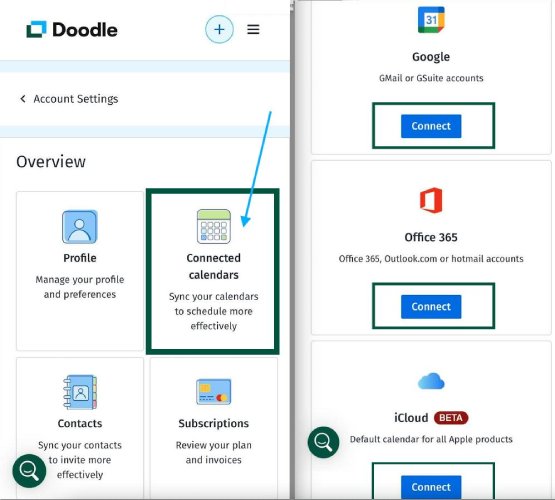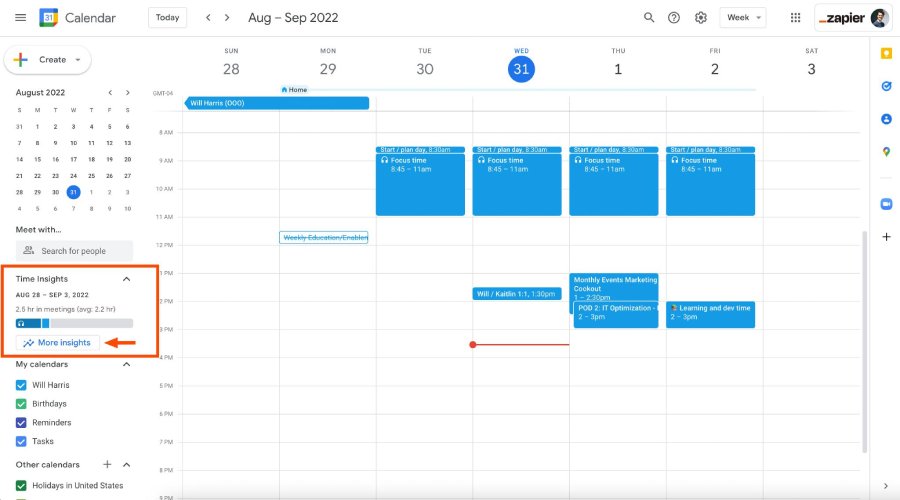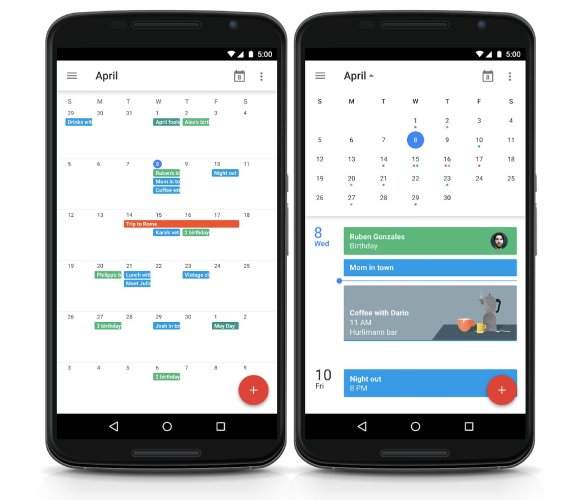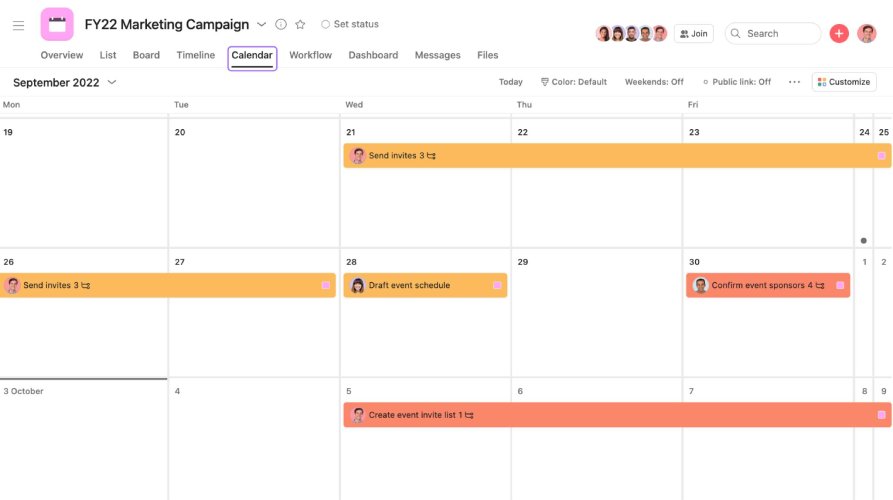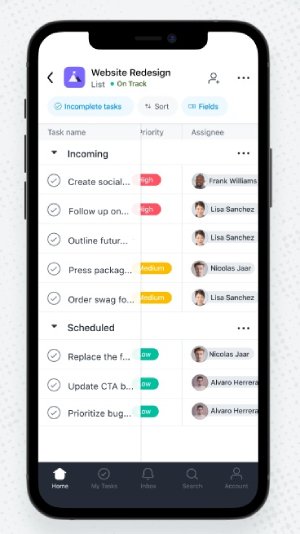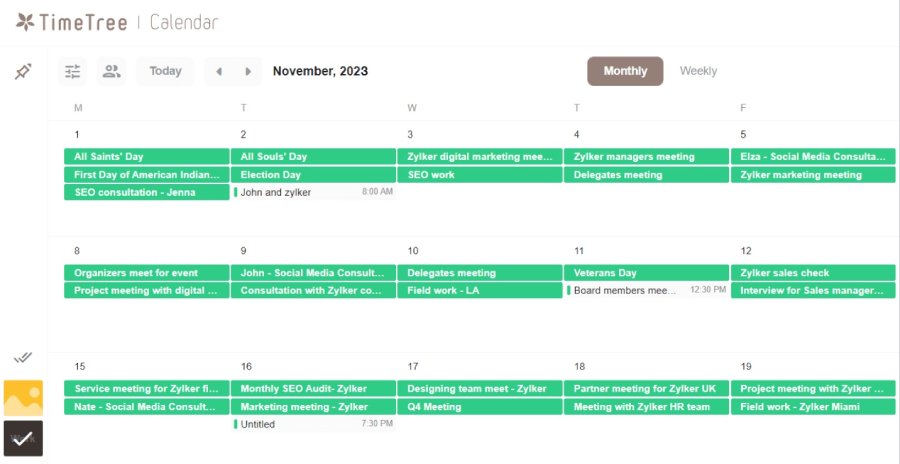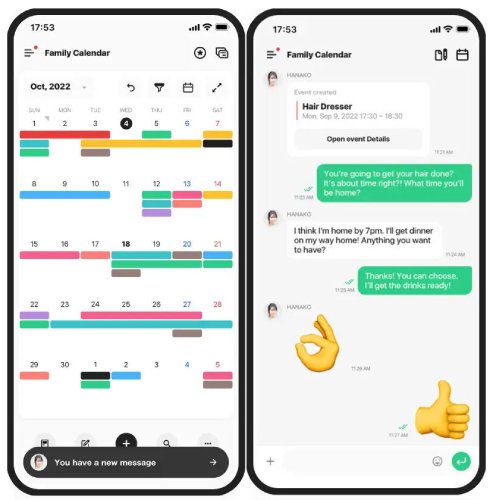A shared online calendar makes it easy to set up a meeting, track sales activities, oversee task management, and set appointments with clients. The best shared calendar apps not only let you schedule events, but also offer functionality for collaboration, third-party integrations, and built-in appointment reminders. We’ve rounded up seven of the top calendar-sharing apps based on pricing, user reviews, and essential features, and arrived at the following:
- Best overall for multiple cross-platform syncs: Calendly
- Best for teams prioritizing data security: Microsoft Outlook
- Great free scheduler with native sales app integration: Zoho Calendar
- Ideal for group meeting scheduling: Doodle
- Best shareable calendar with robust collaboration tools: Google Calendar
- Best shared calendar app for task management: Asana
- Top schedule sharing app for mobile users: TimeTree
Best Shared Calendar Apps Compared
Provider | Starting Price per User* | Free Plan? | Our Rating Out of 5 |
|---|---|---|---|
$8 | ✓ | 4.78 | |
$6 | ✕ | 4.69 | |
$0 | ✓ | 4.64 | |
$6.95 | ✓ | 4.53 | |
$6 | ✕ | 4.28 | |
$10.99 | ✓ | 4.21 | |
$4.49** | ✓ | 4.07 | |
*Based on annual billing; monthly billing is also available for slightly higher rates.
**Based on monthly app subscription; annual billing costs $44.99.
Calendly: Best Overall for Cross-platform Synchronization

Pros
- Intuitive integration with other calendars, customer relationship management (CRM) systems, and productivity tools
- Ability to add calendar to website for booking and time slot visibility
- Straightforward interface with no steep learning curve
Cons
- Free plan only lets you share one calendar
- Access to usage metrics requires higher-tiered plans
- Routing feature limited to Salesforce integration
- You need a shareable calendar that syncs with multiple apps: Calendly is renowned for its seamless integration with many productivity tools, such as Zoom, Google Meet, Slack, and Intercom. Easily connect Calendly to external calendars, like Google and Outlook, without the dreaded back-and-forth through its automation capabilities. This prevents double-booking for separate events from different calendars.
- You want a calendar-sharing app for customer relationship management (CRM) software: Calendly allows you to schedule and sync sales activities with the best CRMs for small businesses. Sales teams leverage CRMs to manage activities like lead generation, contacts data management, and client engagement. You can use Calendly to set meetings with qualified leads through booking pages, customizable event invitations, and confirmation emails, streamlining your conversion tactic.
- You want to connect to multiple calendars for free: You can only connect to a single calendar through the free plan, which can be less than ideal if you want to sync two or more external calendars and view them in a single platform.
- Alternative: Zoho Calendar allows you to integrate your Google Calendar and Apple iCloud Calendar (iCAL) at no cost.
- You need a cost-effective shared calendar app with analytics reporting: Keeping track of your team’s sales meetings and regular schedule can provide insights for better sales management. While Calendly offers usage metrics in its Professionals plan for $12 per seat, it may not be the best option for small teams and startups cost-wise.
- Alternative: Google Calendar has Time Insights that lets you see how much time is spent in meetings and who the user meets the most. You can access this feature even at the lowest-tiered plan for $6.
Calendly Monthly Pricing Plans*
*Pricing is based on annual billing on a per-user monthly breakdown. Monthly billing is available at a higher cost. Pricing reflects info available at the time of publishing. While we update pricing information regularly, we encourage our readers to check current pricing here.
Our Expert Opinion
Calendly is a scheduling champion with its seamless alignment with many sales management tools, including external calendars. Users can take full control of their schedule from a single interface, as it connects and synchronizes with other platforms. While the free plan offers the essential scheduling features, scaling up becomes well worth it as your business grows, considering Calendly’s syncing ability with other sales functionality like lead qualification.
Microsoft Outlook: Best for Teams Prioritizing Data Security

Pros
- Security controls for calendar data visibility, and safety features against unauthorized access
- Notification for double bookings and conflicted events
- Meeting insights with suggestions for files to include, emails, and other valuable information for the upcoming meeting
Cons
- Using the calendar app requires a paid subscription to Microsoft 365; no free plan available
- Its numerous features can be overwhelming
- Limited direct cross-platform integration
- You want a shared business calendar with advanced security features: Microsoft 365 (MS365) houses Outlook calendar and has a reputation for valuing data privacy and identity protection. Businesses that handle confidential information and deal with clients keen to protect their data will find that this app suits their needs. Aside from information regulation, MS365 employs multi-factor authentication, data loss prevention, data encryption, and identity management—all to ensure the safety of people involved in specific meetings or events.
- You’re eyeing a shareable calendar that provides data-based suggestions: One impressive feature of this calendar is the Meeting Insights. When you schedule a meeting, you can access suggestions on what information to include, such as announcements, file attachments, other people, etc. It’s highly personalized based on available files and your email exchanges. There’s also the Scheduling Assistant, which checks availability for people you plan to meet with.
- You want a simple shared calendar app: Since Outlook calendar is not a standalone app, its connection to various MS365 tools and feature-packed interface may require a steep learning curve. In this case, it’s not ideal for users looking for a straightforward shareable calendar limited to scheduling and task management.
- You need a free shared calendar app for collaboration management: Given Microsoft 365’s design for scaling businesses and its robust set of collaboration and management tools, a free plan is out of the question. To leverage Outlook Calendar, you must shell out at least $6 per user, monthly.
- Alternative: Asana is a solid pick if you’re looking for a schedule-sharing app that goes side-by-side with basic task management features.
Microsoft Outlook Monthly Pricing Plans*
To use Microsoft Outlook email and shared calendar, subscribe to any of Microsoft 365’s plans. All plans provide access to a slew of productivity and collaboration tools valuable to small businesses.
*Pricing is based on annual billing on a per-user monthly breakdown. Monthly billing is available for a higher cost. Microsoft 365 offers a 30-day free trial for the paid plans. Pricing reflects pricing info available at the time of publishing. While we update pricing information regularly, we encourage our readers to check current pricing here.
Our Expert Opinion
Although calendar visibility is crucial for prospecting and lead management, data privacy still takes precedence—a principle Microsoft Outlook clearly values. We like the extra security features that expand as you move to higher-tiered plans. The new automated prompts and tailored recommendations for meeting schedules also come in handy when preparing for a sales demo or business presentation.
Zoho Calendar: Best Free Shared Calendar With Native Sales App Integration

Pros
- Integration with other Zoho workplace and business apps
- Standard user and privacy management
- Customizable notifications and availability confirmation
Cons
- Limited appointment booking capabilities
- Mobile app is not as intuitive as the web version
- Synchronization issues with external calendars
- You want access to other free sales apps: Once you sign up for Zoho Calendar, you can also have access to other free apps in the Zoho ecosystem. For example, you can explore Zoho CRM features, create Zoho Mail for five users, embed Zoho meetings for webinars, and use other tools for your business operation—all without spending a dime.
- You need additional customization for meeting reminders: When sending a meeting invite through Zoho calendar, you can choose a reminder type between an email, pop-up, or notification. Recipients also have a dedicated button in the calendar called “Yet to Respond” for event invites waiting for attendance confirmation. That way, users can review calendar invites without scrolling through their emails.
- You want an intuitive calendar app for mobile devices: Zoho Calendar has a seamless web-based calendar with clear-cut functionality. However, users observe lagging and syncing problems, especially with mobile devices. If you’re reliant on your smartphone, you may want to consider a dedicated shared calendar mobile app.
- Alternative: TimeTree is an excellent choice if you want a basic shareable calendar you can sync with your mobile devices.
- You need a more comprehensive all-in-one scheduling option: As a schedule tracking and sending tool, the Zoho calendar may be enough for small businesses and sales teams. But if you need to expand to external online appointment booking features, you won’t find it here, primarily because Zoho has Zoho Bookings for that functionality. It’s another free platform that requires a learning curve of its own.
- Alternative: Calendly is our best shared calendar app with broad scheduling features for teams and clients alike.
Zoho Calendar Pricing Plan*
Free
Cost:
- $0 per user
Key Features:
- Up to 50 shared calendars
- Appointment scheduler
- Availability confirmation with attendees
- Customizable notifications for RSVP updates and reminders
- Templates for calendar personalization
- Website integration for team calendars
- Privacy controls
- Cross-calendar sharing with external platforms
- Integrations with third-party and native Zoho apps
- Moderator assignments and team calendar monitoring for admins
*While we update pricing information regularly, we encourage our readers to check current pricing here.
Pro tip: While Zoho Calendar offers robust features for setting up meetings with teams, qualified leads, and clients, you can access more online booking and calendar syncing capabilities with Zoho Bookings. Get additional appointment features, sales and marketing support, and dedicated booking pages for free or at a starting cost of $6 per staff, monthly.
Our Expert Opinion
If you’re already using Zoho business tools, don’t look any further if you want a shareable scheduling app. The Zoho calendar offers a sleek, user-friendly interface with integration to functionality from Zoho’s other set of work applications. We like the varying options to notify recipients and meeting attendees and the extra attention to RSVP confirmation.
Doodle: Best Shareable Calendar App for Group Meetings

Pros
- Consensus scheduling using meeting polls
- Availability sharing through a link
- User-friendly with a simple interface
Cons
- Bare-bones free plan features
- Ad removal requires the paid plans
- Limited functionality
- You need a shared calendar for large groups: Doodle is a crowd favorite for setting group meetings with its ability to synchronize and confirm available schedules for all attendees. Using the meeting poll, organizers can identify ideal dates and time periods that guarantee maximum attendance.
- You want an easy-to-use app with straightforward features: Users find the Doodle interface clean yet professional, with clear-cut scheduling functionality. Teams needing a platform to secure time slots for events and meetings can find good value with Doodle.
- You’re looking for a calendar app with extended features: Doodle’s simplicity can be both a blessing and a curse depending on your business needs. Those wanting capabilities beyond scheduling may find the shareable calendar inadequate.
- Alternative: Outlook Calendar, through Microsoft 365, has a myriad of productivity tools. Another excellent pick is Google Calendar from Google Workspace.
- You want a free shareable calendar without any ads: Both Doodle’s web version and mobile app contain ads on its free plan, and you can only opt for removal when you sign up for at least the Pro plan.
- Alternative: Zoho Calendar is another free, user-friendly app that edges out Doodle for its zero ads.
Doodle Monthly Pricing Plans*
*Pricing is based on annual billing on a per-user monthly breakdown. Monthly billing is available at a higher cost. Pricing reflects info available at the time of publishing. While we update pricing information regularly, we encourage our readers to check current pricing here.
Our Expert Opinion
Doodle’s poll setting ensures the best time for large teams to meet. It’s also valuable for big events such as an online webinar or a business expo. The features are not complicated, and you can access third-party apps via integration and added security layers in the lowest-tiered plan for $6.95 per user, monthly.
Google Calendar: Best Calendar Sharing App With Robust Collaboration Tools
Pros
- All-in-one collaboration solution with a shared calendar for online and offline events
- Native video conferencing via Google Meet
- User management and security controls
Cons
- No free plan in Google Workspace
- Users report difficulty in connecting external calendars like Outlook
- Limited task scheduling customization
- You want a shareable calendar for collaboration management: Google Calendar is one of the products you can use when you have a Google Workspace subscription. Aside from scheduling, you can access time insights and group calendars. You can set your status, share files and meeting notes, and check your team’s availability during certain dates and times.
- You conduct offline and online meetings: Setting online meetings in Google Calendar is a breeze since you can add Google Meet, its native video conferencing tool, and even Zoom in the invitation. Plus, there’s an appointment scheduling option where you can share a booking page with clients and other stakeholders. Google Calendar also has great offline meeting features, such as room booking and a map for locating venues.
- You need a free shared calendar with a business booking page: You can use Google Calendar for free when you sign up for a personal Gmail. However, this is not recommended for sales teams and small businesses if you want to maintain professional authority. That said, Google Calendar for business may not be the right app to start with if you want a free appointment scheduler for your team.
- Alternative: Calendly offers a booking page with your logo in its free plan, making it one of our best free shared calendar apps.
- You want color labels for tasks: Google Calendar has various color labels for meetings, allowing you to group them based on type or custom tags. We can’t say the same for tasks, though. When creating a task, you only need to input the title, details, date, and time. There’s no customization for priority level.
- Alternative: Consider Asana if you want added features for scheduled tasks, including dependencies, color labels, and subtask assignments.
Google Workspace Monthly Pricing Plans*
*Pricing is based on annual billing on a per-user monthly breakdown. Monthly billing is available for a higher cost. Google Workspace offers a 14-day free trial for the paid plans. Pricing reflects pricing info available at the time of publishing. While we update pricing information regularly, we encourage our readers to check current pricing here.
Our Expert Opinion
Google Calendar combines simplicity and functionality through features that set meeting essentials like video conferencing tools, a premade agenda template, room scheduler, map locator, and automated notification on your mobile device or computer. It’s a testament to Google Workspace’s reputation in the productivity and collaboration arena, specifically in streamlining workflows for small businesses.
Asana: Best Shared Calendar for Task Management

Pros
- Full capacity project management solution with cross-platform calendar sync
- Custom schedule visualization options
- Calendar filtering for with custom fields for sorting priorities, status update, and activity metrics
Cons
- Lacks built-in meeting polls, availability management, and appointment booking
- Interface navigation is not beginner-friendly
- Higher-tiered plan gets expensive
- You want a shared calendar with due date management and task tracking features: Asana has extensive capacity to manage multiple projects, which means its calendar app accommodates not just meeting schedules but task assignment and status updates as well. Team leaders can delegate tasks and events and specify due dates with good visibility. It’s a solid choice if you’re eyeing a calendar that doubles as a worklist app.
- You’re looking for a customizable option: Tweak your shared calendar based on customizable features to streamline your activities. For example, you can apply colors depending on the task type, expand the date range, hide the weekends, or add custom fields.
- You need a scheduling platform with appointment booking: There’s no online scheduling system native to Asana, especially for people outside your organization. You’ll need a third-party integration for this functionality.
- You want a shareable calendar with low-cost scalability: It is no surprise that Asana has relatively pricier paid plans considering it’s designed for project management. Consider other cost-effective options if your business need is limited to schedule and general collaboration management.
- Alternative: Google Workspace and Microsoft Outlook have a shared calendar app and extensive productivity tools starting at $6 per user, monthly.
Asana Monthly Pricing Plans*
*Pricing is based on annual billing on a per-user monthly breakdown. Monthly billing is available at a higher cost. Pricing reflects info available at the time of publishing. While we update pricing information regularly, we encourage our readers to check current pricing here.
Our Expert Opinion
Asana is the best app for shared calendars if you need a centralized platform to view meeting schedules, tasks, team events, etc., all in one space. We like the calendar customization features that let you tailor fields based on preference, its time-tracking capability via third-party integration, and its unlimited file storage capacity.
TimeTree: Best Simple Shared Calendar for Mobile Users

Pros
- Easy-to-use shared calendar app for its uncluttered interface
- Connection with default smartphone calendars
- Calendar chats for keeping all conversations related to a meeting or event in space
Cons
- Limited appointment booking capabilities
- Users note that external calendar synchronization is not seamless
- Free plan contains ads
- You prioritize a shared calendar designed for mobile devices: With its ability to synchronize with your phone’s default calendar, whether it’s Android or iOS, TimeTree proves its value as a user-friendly app for mobile calendar organization. It also has a clean interface and extended accessibility to other mobile devices like Apple Watch. You can group events by color and add files, notes, locations, URLs, and tasks.
- You want a scheduling app with a built-in chat feature: TimeTree has a Chat feature where you can exchange conversations with other team members or attendees, centralizing all reminders, agreements, and announcements. It removes the need to switch to other communication apps and email platforms for related messages.
- You’re looking for a shared calendar app with an intuitive cross-platform connection: While you can connect calendars from Google and Outlook to TimeTree, users report the process requires a learning curve.
- Alternative: For seamless integration to external calendars and other apps, consider Calendly.
- You need a shareable calendar with admin control: TimeTree’s overall design targets individual use, which is apparent from its lack of features for team management. If you’re a sales manager, you can benefit more from options that allow you to delegate tasks and meetings directly to your team or sales rep’s calendar.
TimeTree Monthly Pricing Plans*
*Pricing is month-to-month, but annual billing is also available at a lower cost ($44.99). Pricing reflects info available at the time of publishing. While we update pricing information regularly, we encourage our readers to check current pricing here.
Our Expert Opinion
Sales teams on the go find TimeTree easy to use and valuable for keeping track of schedules, contacting leads, and managing meeting-related files on any mobile device. While the free plan covers the basics of scheduling, you can unlock other helpful features like the vertical view and file management for as low as $4.49 per account, monthly.
How We Evaluated the Best Shared Calendar Apps
Small businesses using a shared calendar app find it easier to maximize their time, organize their daily workload, and keep everyone in the loop for important events. With these in mind, we evaluated the business calendar providers based on essential features like schedule management, collaboration tools, automated reminders, and cross-platform sync. We also examined each provider’s pricing structure, customer support, and overall usability.
The tabs below provide insights on how we evaluated the best shared calendar apps:
25% of Overall Score
The top considerations for our picks for the best calendar-sharing apps include relevant scheduling capabilities like tools for organizing meetings, sending invitations, and connecting with collaboration tools. We evaluated the native and third-party apps and how seamless the integration process is. The availability of a mobile version is also a crucial part of this criterion.
20% of Overall Score
While most calendar-sharing apps are relatively more affordable than other business tools, their value for money might vary based on functionality. We checked for any free plans and their key features. Then, we evaluated their pricing plans and matched the upgrades with the perceived expanded value.
20% of Overall Score
Advanced features consist of capabilities that enhance user experience and business solutions. For this criterion, we evaluated how well calendar sharing and cross-platform sync go for each provider. We also looked into multiple notification options and availability management.
20% of Overall Score
Customer support comes in the form of help desk service and the availability of a learning hub. We checked each provider’s channel for customer service, be it email, phone, live chat, or a combination of the three. We also considered the available hours and the extensiveness of their knowledge base.
15% of Overall Score
Aside from firsthand experience, we looked into what actual users say about each app from reliable online reviews. We cross-checked the information we got from our own experience to develop a valid and reasonable assessment. Close attention was paid to product usability and user-friendliness.
Frequently Asked Questions
Yes, you can find scheduling platforms that allow you to view multiple calendars in one interface, such as Calendly and Asana. You can also start using these apps for free.
Bottom Line
Small businesses and sales teams should have a shared calendar to ensure schedule alignment, such as when implementing sales and marketing strategies and managing all types of meetings. Its easy access, automated notification, and built-in event detail fields centralize relevant information for everyone. While Calendly tops our pick for the best shared calendar apps, you may find other options more suited to your business needs.
